Migrate, Hibernate or Adapt
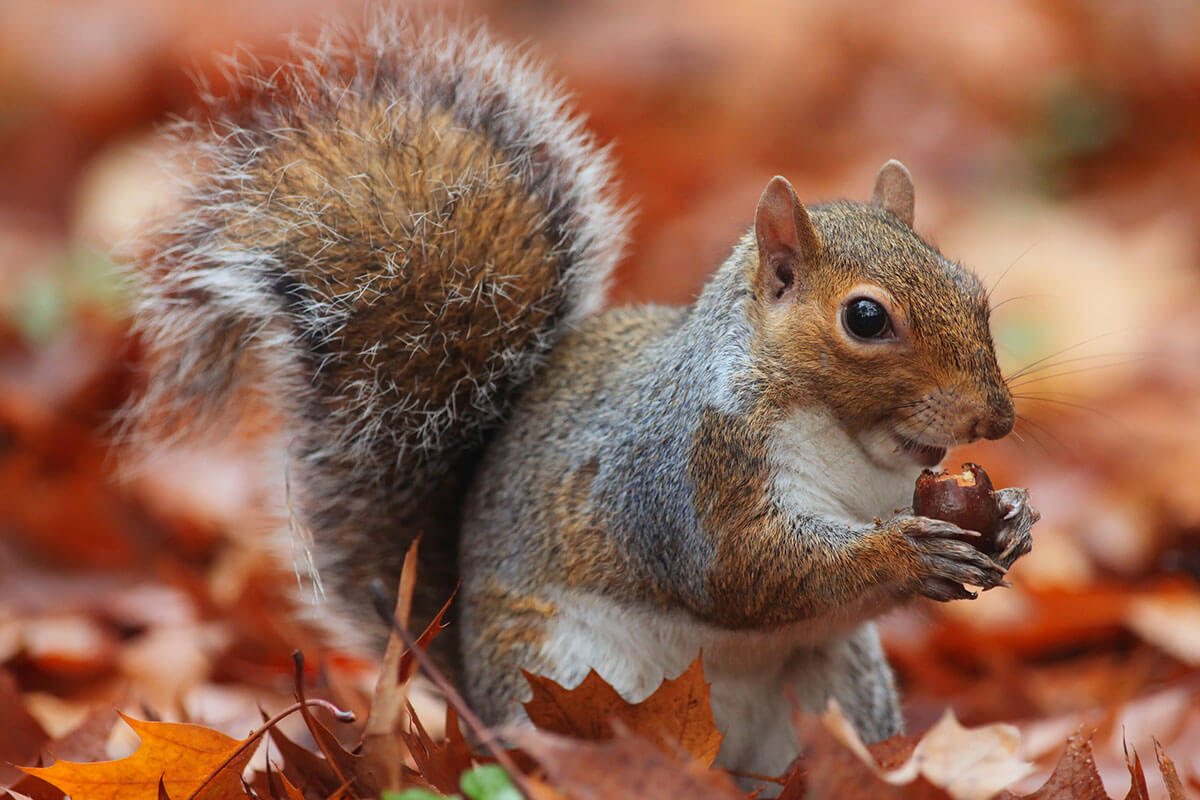
As the temperatures get cooler here in the northern Midwest, we see the leaves change color and fall to the ground. What we may not notice is that animals begin to change, too. Here are just a few ways they prepare for winter:
Migrate.
Many birds (and even Monarch butterflies,) fly to a warmer place to live as the seasons begins to change.
Hibernate.
A few animals fall into a deep sleep called hibernation during the winter. Body temperatures drop and they sleep for months to save energy. Bears, skunks and chipmunks hibernate.
Adapt.
- Grow thicker/warmer coats. Animals with fur (i.e.: rabbit, fox, mink, deer, etc.) grow thicker fur in the winter to keep warmer. Some even change the color of their coat for winter for better camouflage against the snow.
- Gather extra food. Some animals like squirrels and mice stock up on food in the fall. They collect and store nuts, seeds and leaves to eat when those temperatures drop.
- Find good shelter. Animals that stick around as the cold sweeps in, may live inside trees, under rocks or even underground during the winter months.
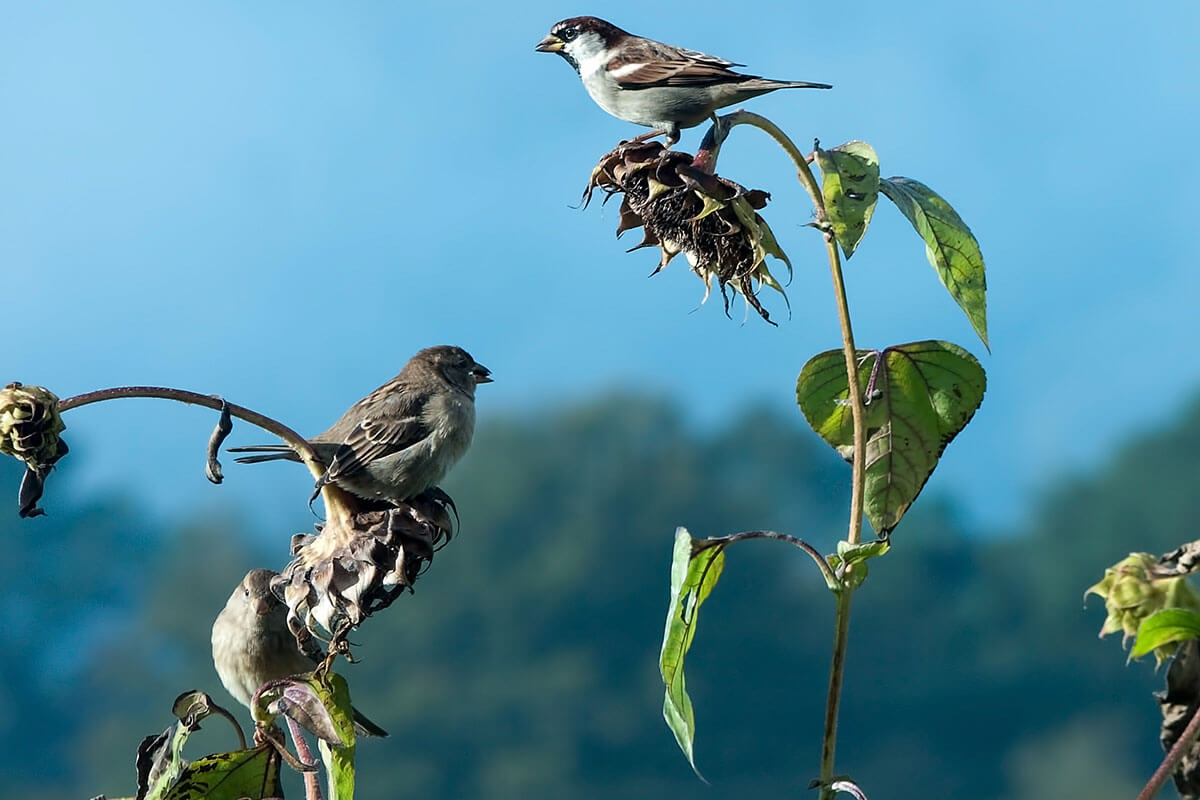
Autumn
Autumn begins to show itself here in Indiana as the purple New England asters and Joe Pye weed bloom. Sumac and Virginia creeper leaves turn red while walnut leaves turn yellow and fall. THAT’S when we begin to see the changes with birds as well. Autumn varies from region to region, as does the bird migration schedule. But wherever you are, it’s fun to see what vacates the area, what travels through and what moves in for winter.
A great way to see all that is to watch the bird feeders and seed heads in your yard. Don’t give in to temptation and dead head those flowers that have gone to seed... leave them there for the wildlife! (Migrating flocks and winter visitors will thank you.) No way to do that in your yard? Just hang a bird feeder filled with black oil sunflower seeds and let the fun begin!!
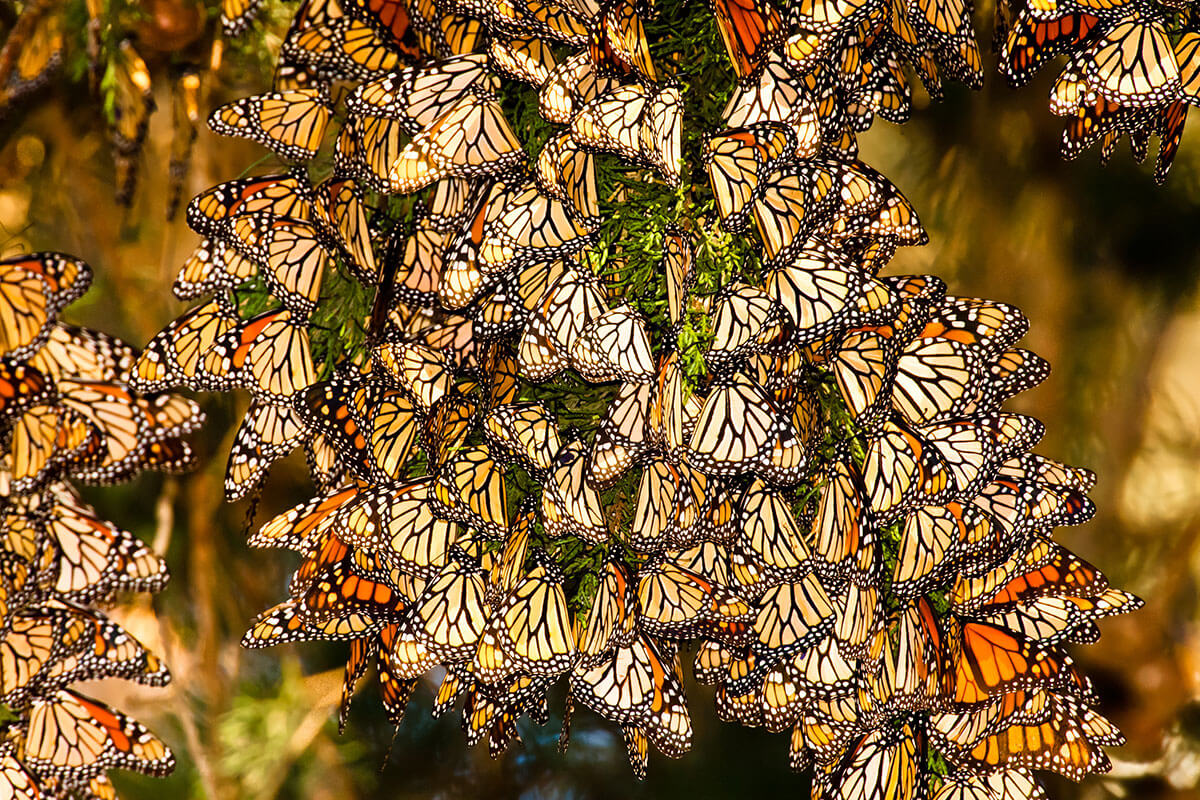
Butterflies
Fact: Butterflies are cold-blooded and can't handle the cold temperatures of winter in many areas. So... what happens when Jack Frost arrives? Many species of butterflies have gone into their own type of hibernation by entering a stage in which they can winter over (egg, pupal or caterpillar.) A few are equipped with a type of antifreeze, so they will find a safe place to hide as it gets colder. The elite few, however, migrate. The most spectacular long distance migration is that of the Monarch butterfly. The monarch migration begins in October each year as all adult monarchs make their way west to California or south to Mexico.
Interested in tracking their progress? See maps and more at monarchwatch.org/tagmig/index.htm
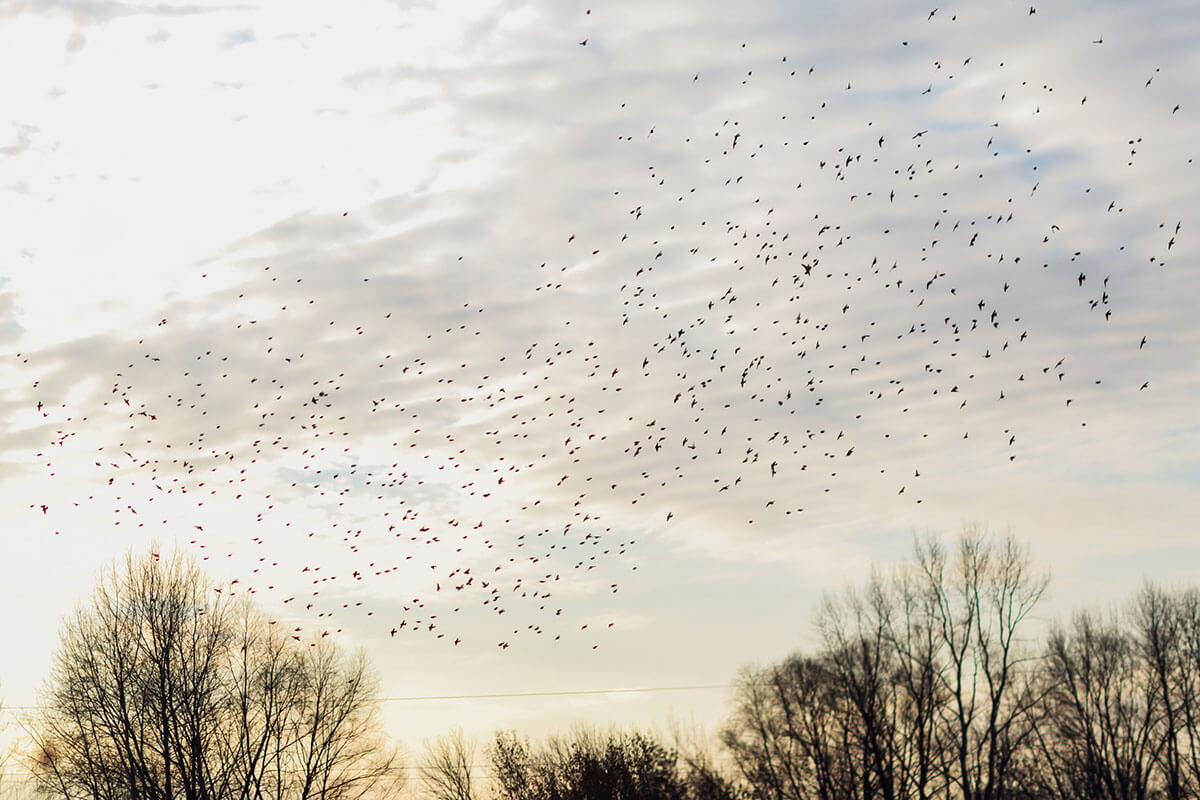
Little Birds Migrate, Too
As the crisp fall air moves in, many of our summer birds gather into larger flocks and migrate. That also means it’s a great time to check out the migrating birds that we don’t often see. An easy way to do that is to attract them with food for their journey south. Most people notice the geese flying in formation, some will take notice of other waterfowl moving through... but don’t forget the “little” birds. Small birds migrate too and need fuel and fat to handle the trip. This is the perfect time to put out extra bird seed and suet. The added benefits? Migrating birds will remember your location as a reliable food source, AND you’ll attract the incoming winter bird species!
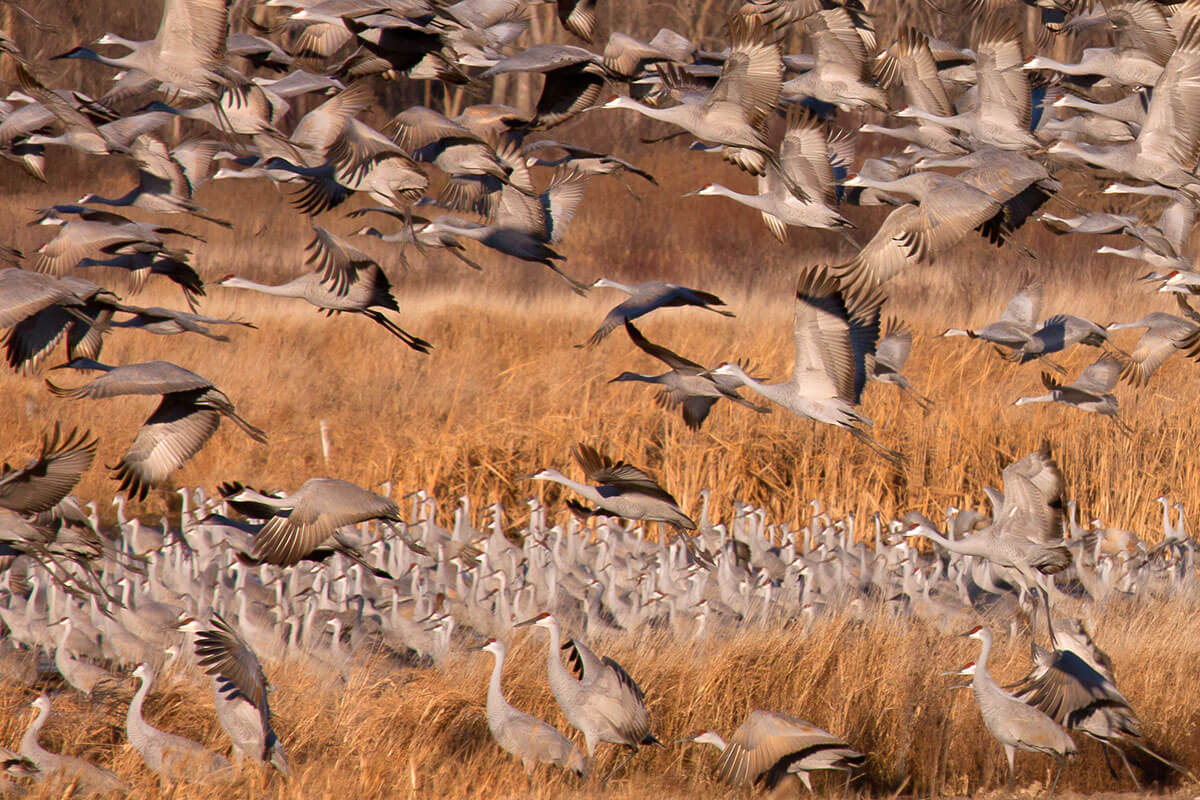
Sandhill Cranes
Standing 3 to 4 feet high with a wingspan of 5 feet (or more), the sandhill crane is an incredible sight to behold. Never seen one? Now’s your chance...
Migrating sandhill cranes can be seen throughout the U.S., but right here in Indiana, (Jasper-Pulaski Fish and Wildlife Area in Medaryville) we have one of the top “hot spots” to view them. Jasper-Pulaski is in the sandhill’s migratory path, so they congregate there in the thousands to tens-of-thousands during fall and spring migration. The cranes stop here to rest and replenish their fat reserves so they can complete the migration.
Autumn is the best time of year to view sandhill cranes at Jasper-Pulaski as crane numbers are highest from mid-November to early-December.
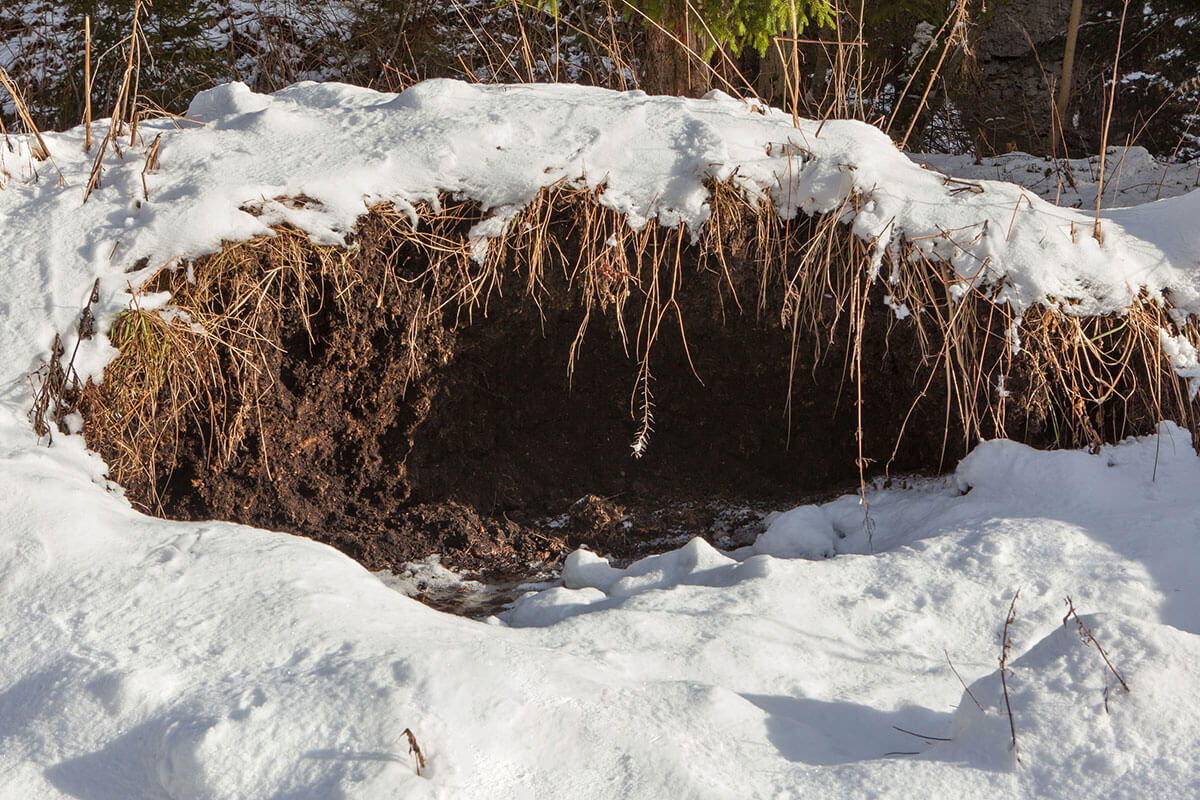
Bears
Although often the first animal that comes to mind when we think of typical hibernation, bears are, (on the contrary,) extremely extraordinary.
At summer's end, bears begin to gorge on food, eating up to five times their usual amount. As winter begins, the black bear seeks out a den in hollow trees, under roots or pile of brush. Grizzlies dig a den in the side of a hill, creating a bed of grass and branches. What makes the bear's hibernation so unusual? They don’t drink or urinate all winter long! They survive on their think layer of fat and water they consumed before their nap began.
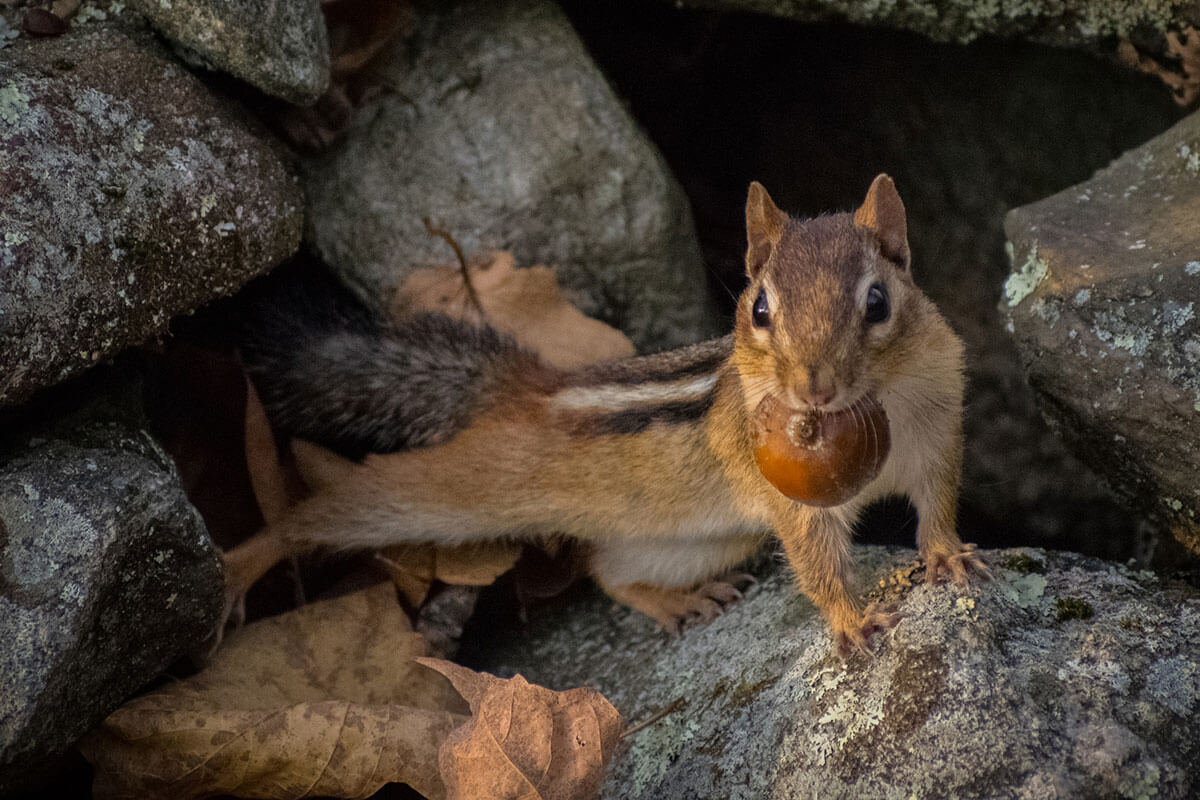
Chipmunks
Chipmunks, a type of ground squirrel, have one of the best “packing” methods around. They have expandable cheeks that stretch to carry loads of seeds and nuts. This little fuzzy charmer fills a special food chamber of its underground burrow with food, then settles in for a long nap. During this hibernation, the chipmunk will awaken several times to eat. To warm up enough to move about, they simply shiver a few times to raise their body temperature. Hmm... long naps and food always within reach? What a life!
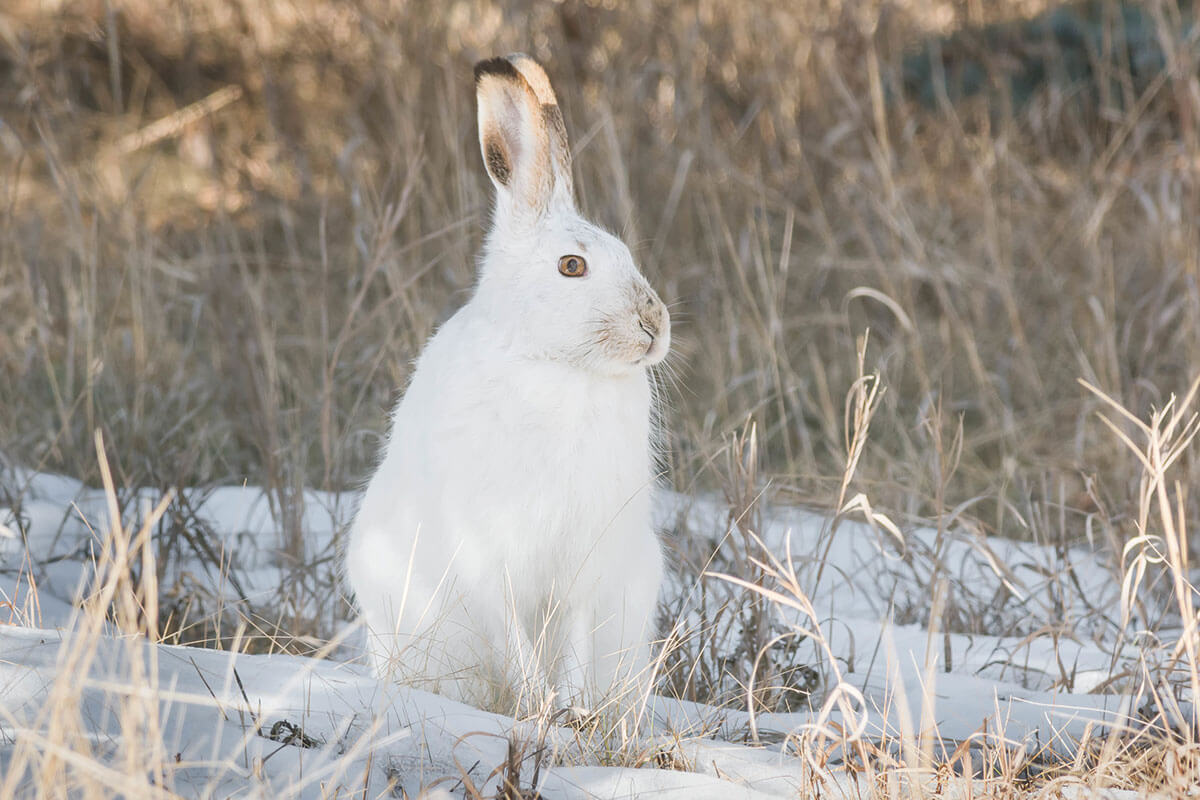
Snowshoe Hares
If you aren’t going to migrate or hibernate, it’s a real plus if you can “adapt!”
Snowshoe hares are just one of North America’s forest dwellers that ADAPT for the winter months. They are naturally camouflaged in shades of brown and gray during spring summer, but change to white as temps drop and the snow begins to blow. Slightly larger than rabbits, the snowshoe hare has longer hind legs and ears. The hare’s oversized, furry hind feet are the perfect size and shape (hence the name, snowshoe) to keep them on TOP of the deep snow. Their winter white coat renders them nearly invisible as they feed at night.
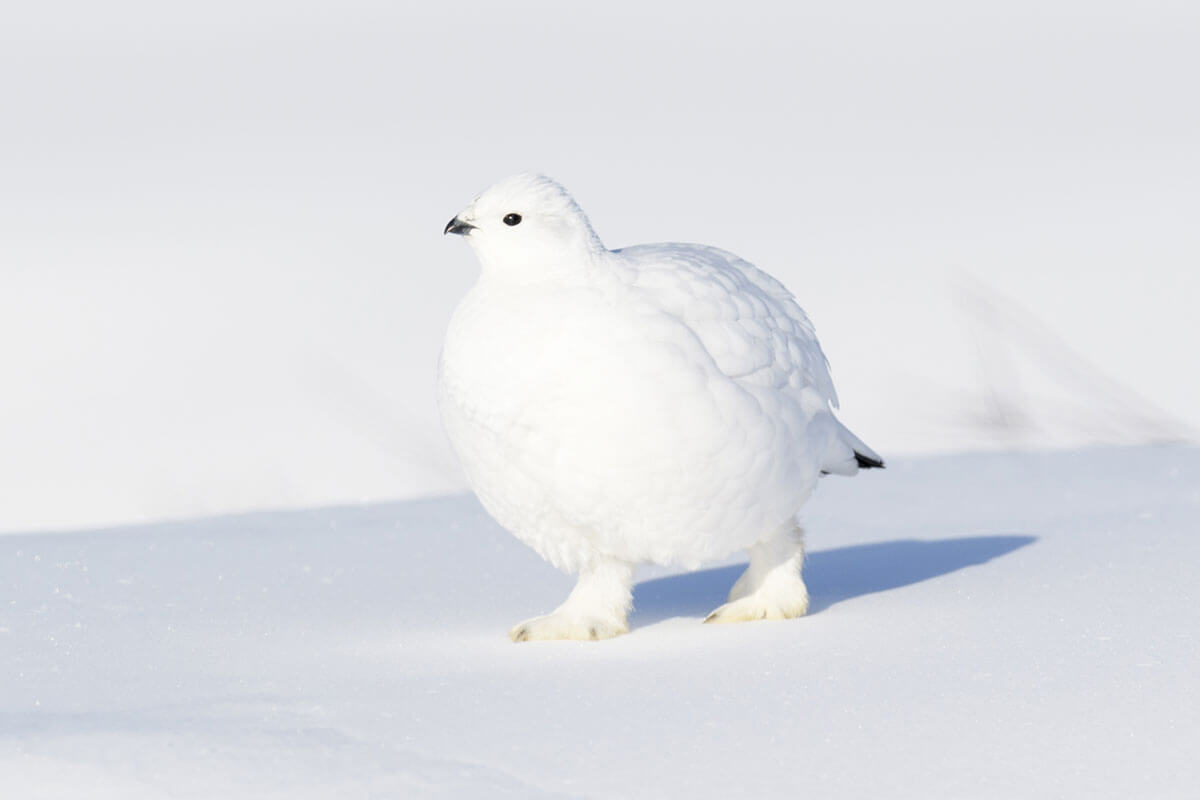
Willow Ptarmigan
All of us (to some degree) “adapt” to our environment. As the snow starts to come, we don our coats, hats, gloves and boots. When we want to appear invisible, we pull out the correct color for camouflage. Just a few of our wild friends in Canada and Alaska have the genetics that allow them to change color when the ground is white...
The Willow Ptarmigan (arctic grouse) changes from light brown in summer to white for winter. This change is one of the few things that keeps them alive when predators are at their hungriest. They also have feathered toes which help them travel on the snowy ground. Willow Ptarmigan are social in winter, feeding and roosting close together throughout the season.
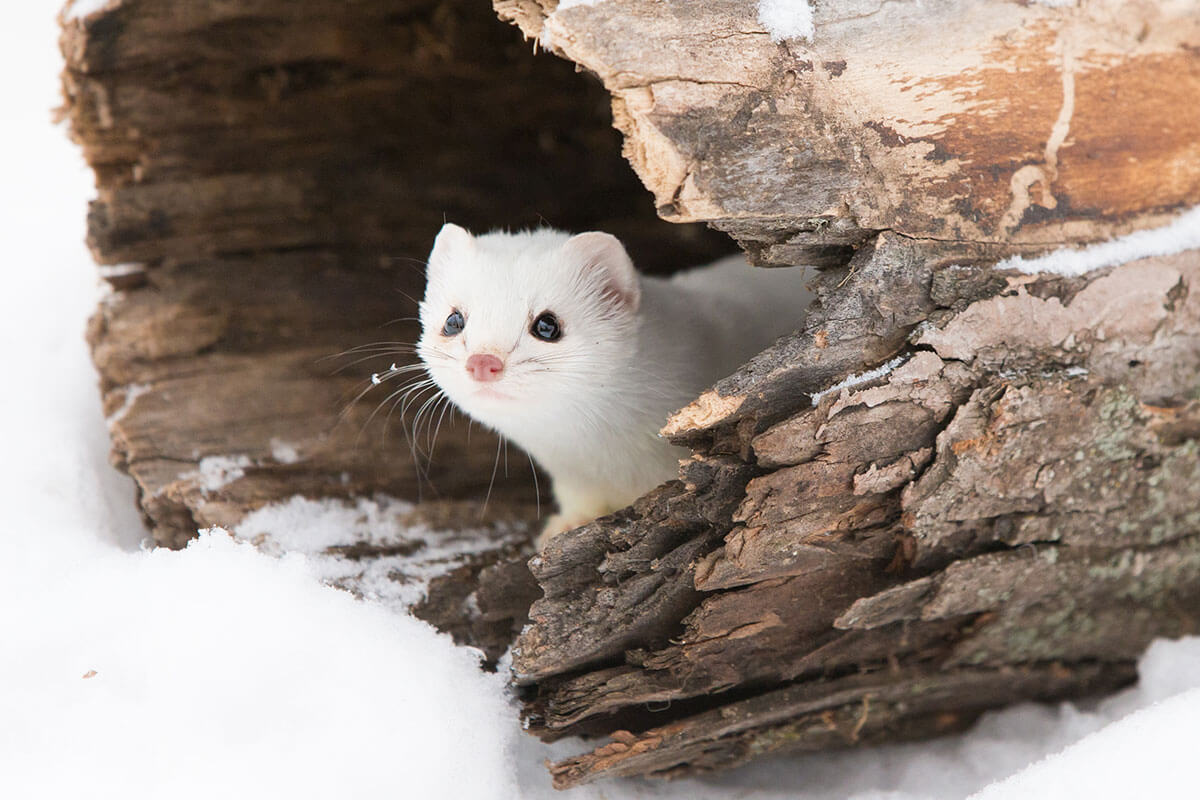
Short-Tailed Weasel
One of nature’s wonders, is the ability of certain animals to adapt to winter by changing color. The short-tailed weasel’s fur is transformed from dark brown to winter white as the season changes. It is also one of the few animals small enough (and slinky enough) to crawl through the maze of tunnels under the snow... tunnels created by mice and voles. The short-tailed weasel (also known as ermine or stoat,) has a distinctive black tipped tail which stays black whether the rest of the coat is brown or white.
Little known fact: The uniquely patterned ermine fur was once used as an elegant trim for the robes of royalty and even clergy.
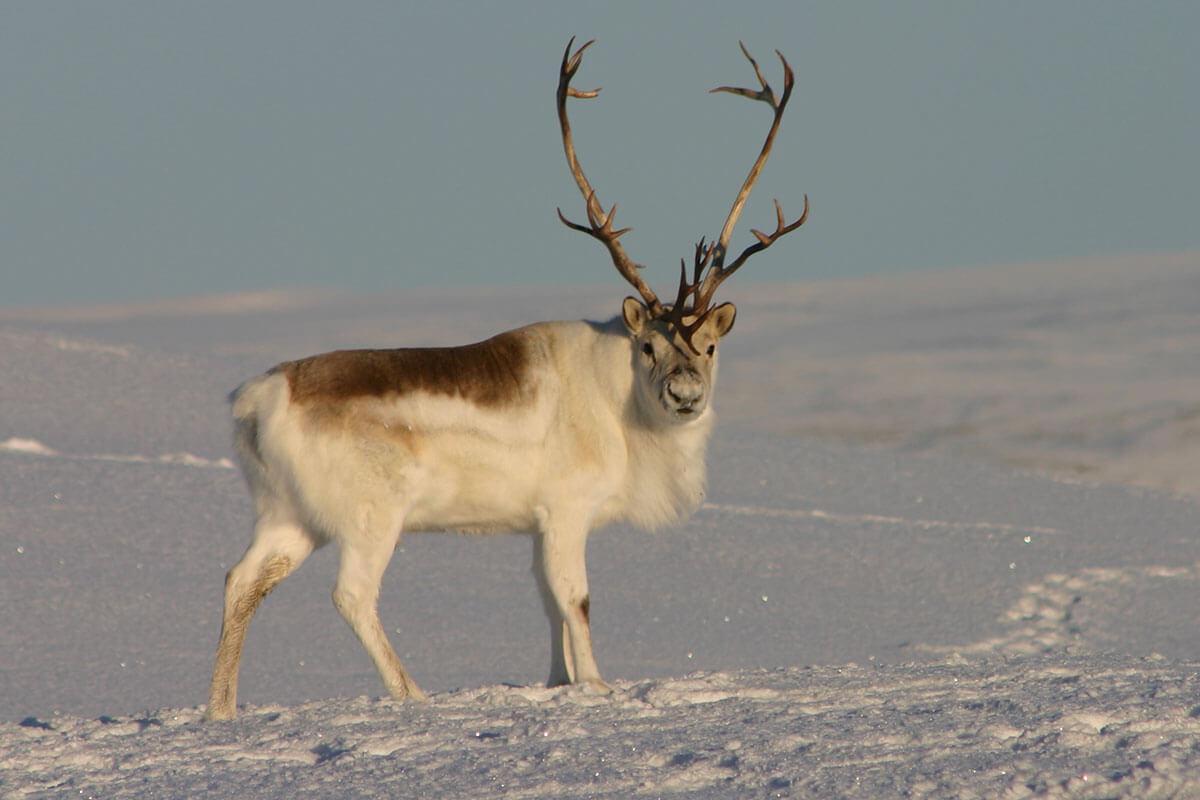
Peary Caribou
We all adapt (to a small degree) to our surroundings. But what’s a critter to do when it’s huge AND tasty to predators? Fortunately for the endangered Peary Caribou, their genes are programmed to adapt in winter... by turning their thick coats white to match their snowy environment. Smaller than other caribou, Peary Caribou are found only in Canada’s Arctic Archipelago islands. Even the caribou’s hooves are shaped in such a way that they work like snowshoes in snow, and paddles in water. The hollow center aids in scooping through snow to search for food, and the sharp hoof edges help caribou to walk on ice.
More interesting facts: Caribou are the only type of deer species whose females and males grow antlers. Male caribou shed their antlers after mating season ends, and females shed theirs after giving birth.
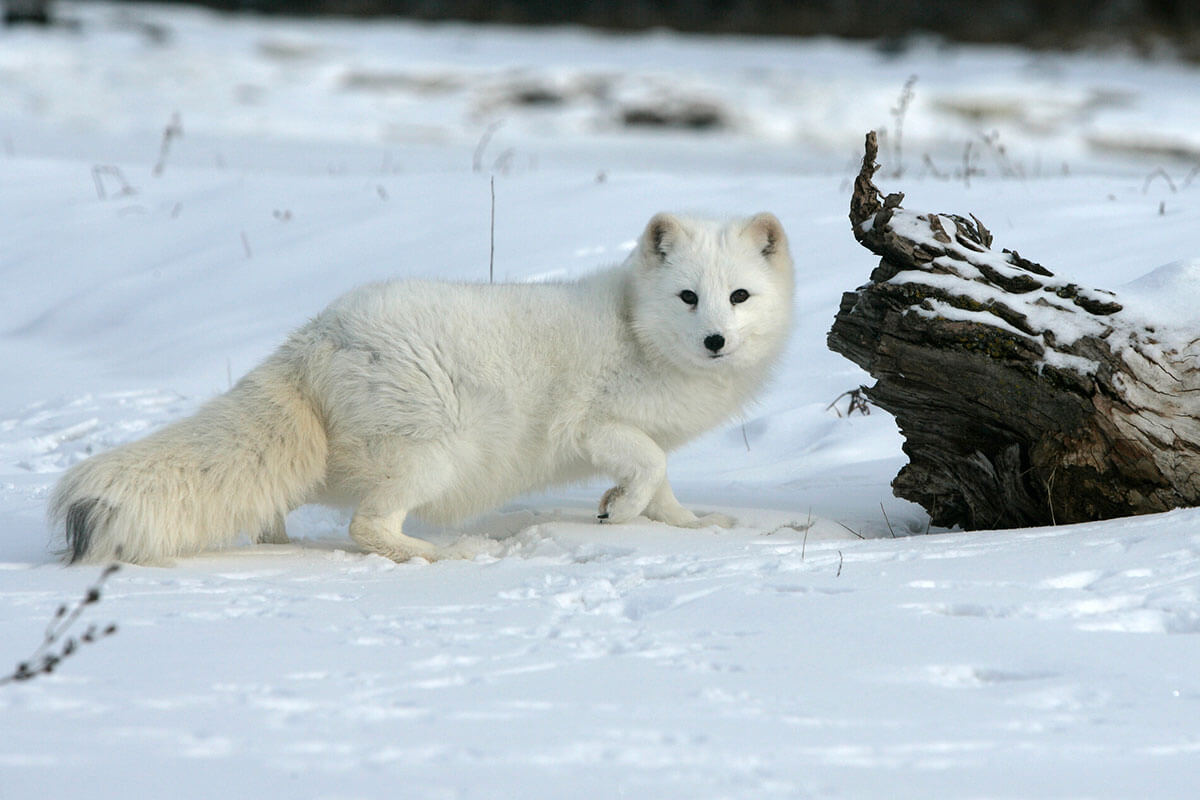
Arctic Fox
The arctic fox is perhaps the most beautiful of the animals that change color for winter. Though smaller than many other foxes, the arctic fox is roughly the size of a large cat, weighing only 6-10 lbs. During warmer months, this fox is two-tone brown... but as the temperatures begin to drop leading into winter, their coat changes to white. The fur of this small animal is thick and fine and even grows on the soles of their feet, providing perfect insulation and allowing them to hunt incessantly for food. Fun fact: the hair shafts of white fur are hollow, acting as insulation for the wearer! Even in sub-zero arctic weather, the arctic fox rarely seeks shelter with the exception of severe storms when they may dig a hole to curl up in to wait it out.
